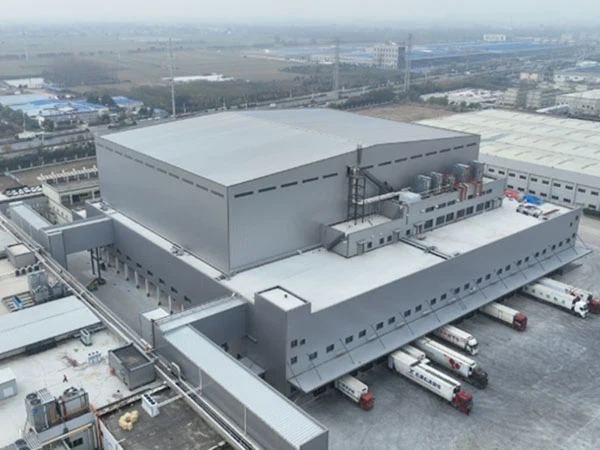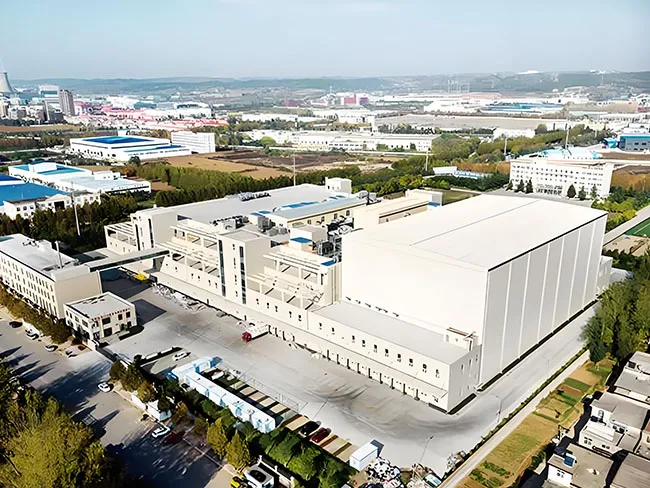In the modern commercial environment, cold chain logistics and storage are crucial for many industries, particularly the food, pharmaceutical, and chemical sectors. Steel structure cold storage is a preferred option due to its exceptional strength, durability, and rapid construction. However, simply building a cold storage facility is not enough; regular maintenance and servicing are key to ensuring its long-term efficient operation, reducing energy consumption, and extending its lifespan.

This article will provide a series of detailed maintenance tips to help your steel cold storage facility maintain optimal condition and maximize operational efficiency.
The refrigeration system is the heart of the cold storage facility, and its performance directly impacts its efficiency.
Condenser and evaporator cleaning: Dust, dirt, and foreign matter can accumulate on the fins of the condenser and evaporator, hindering heat exchange, resulting in reduced cooling efficiency and increased energy consumption. It is recommended to clean the condenser and evaporator at least quarterly to ensure unimpeded air circulation.
Refrigerant level check: Regularly check the refrigerant level and pressure. Insufficient refrigerant can cause the system to overwork, increase wear, and reduce efficiency.
Compressor inspection: Listen for unusual noises in the compressor and check the oil level and pressure. Ensure the compressor is running smoothly and without overheating.
Fan Inspection: Check the evaporator and condenser fans to ensure blades are free of deformation and noise, that the airflow is correct, and that the airflow is sufficient.
The insulation performance of a cold storage facility is directly related to energy consumption. Any minor air leak can result in cooling loss and increased energy consumption.
Door Seals: Regularly inspect the door seals for integrity and elasticity. Replace any aging, cracked, or deformed seals promptly. Ensure the door is tightly closed and seamless.
Wall Joints: Check the sealant at all floor joints for integrity and no signs of flaking or cracking. If damaged, repair or re-apply sealant promptly.
Pipe Holes: Ensure all holes through which pipes and wires pass through the floor panels are adequately sealed to prevent air leakage.
The structural integrity of a steel cold storage facility is the foundation of its safe and stable operation. Floor Condition: Inspect the cold storage floor for cracks, subsidence, or damage. Floor problems can affect the safe storage of goods and even the overall structural stability of the cold storage.
Steel Corrosion: Although steel structures are strong, they can still corrode if exposed to moisture for extended periods. Regularly inspect steel columns, beams, and connectors for signs of rust. If any signs are detected, promptly remove rust, perform anti-corrosion treatment, and perform repair coatings.
Fastener Inspection: Ensure that all bolts and rivets at steel structure joints are securely fastened and not loose.

The electrical system is the power source for the cold storage operation, and its safety cannot be neglected.
Wires and Cables: Inspect all wires and cables for signs of aging, damage, or insulation loss. Ensure that connectors are secure and not loose.
Distribution Boxes and Switches: Regularly inspect the interior of the distribution box for cleanliness and that all switches and circuit breakers are functioning properly.
Lighting: Check that the lighting inside the cold storage is functioning properly to ensure adequate lighting in the work area and enhance operational safety.
Grounding: Ensure all electrical equipment has a good grounding connection to prevent electric shock.
Condensation may form inside the cold storage due to frost melting or equipment operation, necessitating an effective drainage system.
Drain Lines: Clean the drain lines regularly to prevent blockages. Blocked drain pipes can cause water to accumulate inside the cold storage and even damage the insulation structure.
Defrost Drain: Ensure the defrost drain under the evaporator is clean and free of water and ice.
Continuous temperature and humidity monitoring is critical to ensuring efficient cold storage operation.
Sensor Calibration: Regularly calibrate temperature and humidity sensors to ensure accurate readings.
Record and Analysis: Maintain detailed temperature and humidity records and regularly analyze the data to promptly identify abnormal fluctuations, identify problems, and resolve them.
Even with the most advanced equipment, improper operation can affect the efficiency and lifespan of the cold storage.
Operating Standards: Train staff on the proper operation of cold storage equipment, including door opening and closing, cargo stacking, and equipment startup and shutdown. Emergency Procedures: Train staff to respond to emergencies such as refrigeration system failures and power outages.
Systematic and ongoing maintenance of your steel cold storage facility not only significantly improves operational efficiency, reduces operating costs, and extends equipment life, but also ensures the quality and safety of stored goods. Incorporating these maintenance techniques into your daily operations will ensure your cold storage facility is always in optimal working condition, providing a solid foundation for your business growth.
A Comprehensive Analysis of Quality Acceptance Standards for Prefabricated Steel Structure Projects: From Materials to Construction to Safety and Aesthetics
2025-12-11Steel structure reinforcement and renovation of old industrial plants: a practical solution to ensure safety and extend lifespan.
2025-12-05Turnkey Steel Structure Factory Solutions: The Ultimate Way to Build Efficient, Cost-Effective, and Scalable Industrial Facilities
2025-11-24Step-by-Step Guide to Building a Steel Structure Factory: Key Processes for a Durable and Efficient Industrial Facility
2025-11-19Address: No.1 Shuangxiang Road, Luoxin Industrial Park, Luoyang City
E-mail: info@hcggsteel.com
Hotline: +8618800767079

Create the greatest value for customers
Provide the best quality products and services
+8618800767079
info@hcggsteel.com
No.1 Shuangxiang Road, Luoxin Industrial Park, Luoyang City